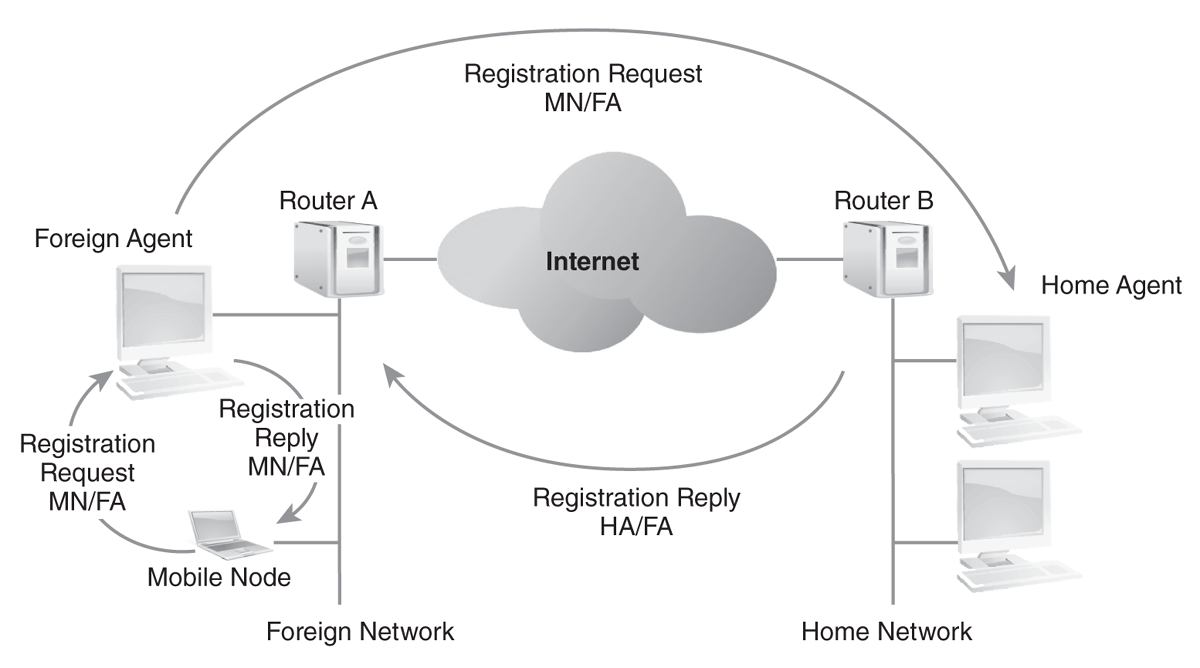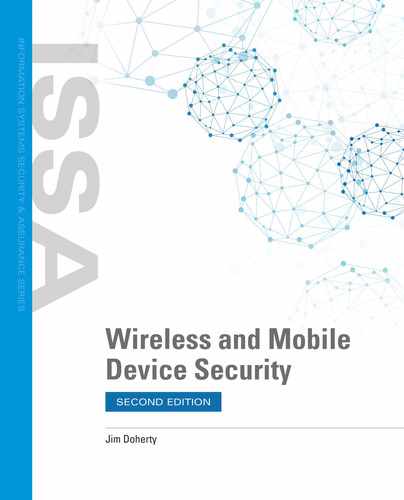The Wi-Fi Market
In 2017, the worldwide WLAN market was estimated to be $5.9 billion per year and is projected to be as much as $15 billion per year in 2022. About half of that was attributed to growth in the enterprise space, as fewer and fewer office spaces even bother installing Ethernet ports for users because most are connecting to the network over wireless most, if not all, of the time. However, this annual spending on WLAN equipment is only part of the story. As noted, Wi-Fi technology has changed the way many organizations do business. Indeed, it has created whole new business models.
Coffee shops, bookstores, and cafés have embraced wireless connectivity in two waves. The first wave involved providing wireless access to a private LAN that charged for a one-time use or for a subscription. Many such businesses felt that this was a nice add-on feature and an opportunity for revenue. What’s interesting, however, is that due to the reduction in price of Wi-Fi equipment, many businesses have converted to providing free Wi-Fi access, choosing to forego the additional revenue in favor of attracting more customers, whom they welcome to come in and stay. In other words, they encourage clients to actually use their stores as an office, for three reasons:
- Those customers tend to buy other goods and services while there
- It creates a regular and loyal customer base
- Customers simply expect it to be available
Hotels have also been transformed. Not surprisingly, providing Internet access to guests has become essential. Perhaps the biggest impact of wireless technology on the hotel industry is that it has drastically lowered the cost of providing Internet access. This is particularly important in situations where retrofitting an older hotel to offer a wired network would be prohibitively expensive. If not for wireless technology, many hotels would have to choose between a very expensive upgrade and the potential loss of revenue. With wireless technology, Internet access can be provided at a much lower cost. This also has an enormous impact on hosting conferences and events, which is a major component of hotel revenues.
Much like cafés, some hotels offer free network access, especially in the lobby, where they encourage users—especially business travelers—to meet. Interestingly, however, some hotels still charge for “high-speed” or “premium” access in rooms but nearly all offer some level of free Wi-Fi to their guests. Wireless connectivity is simply an expectation as much as running water is.
IP Mobility
The number of mobile wireless devices now far exceeds the number of fixed devices. The growth and adoption rates of smartphones and tablets have created a huge demand on mobile operator data networks, with data traffic rates growing upward of 115 percent compounded per year since 2011. The public’s and business’s adoption of smartphones and tablets has been so fast that manufacturers of fixed PCs and desktop computers have either shifted to laptops, tablets, or servers, or are out of the market entirely.
The shift toward wireless mobile devices has presented businesses with many opportunities and challenges—most notably, the challenge of how to make best use of new mobile wireless technologies. After all, networks have been designed and secured with static devices in mind. When LANs were designed, it was assumed that employees would be at a desk within a department. The network was segmented accordingly via subnets to accommodate physically present numbers of employees and allow for future growth. The emergence of WLAN technology was used to address any unexpected growth. However, the growth in the number of IP-capable wireless devices means that employees are now far more mobile and can work from anywhere in the network or even from outside the network—at home or at a client’s site.
This has proved to be very productive for business and has created tremendous improvements in employee efficiencies and communications. Laptops, smartphones, and tablets can be used in any location where there is a WLAN or 4G/5G network connection. These devices can also roam around the workplace LAN, connecting to the WLAN wherever there is a signal. If the WLAN is one single subnet, users can maintain application and web browser sessions.
The ability to roam and maintain an IP session is fundamental to true IP mobility. Ideally, the wireless device must not only be usable in any location, but it should also be usable when in transit between locations and even between IP and mobile networks. This presents a significant problem—when moving from one network or subnet to another, the device will require a change of IP address. However, if the IP address of the mobile device changes, all its current sessions will be lost, and applications will hang and crash.
What is required is a method to allow the seamless transfer of an IP address from one network to another without losing IP sessions. Only then will there be true mobility with roaming using IP wireless devices. This is termed IP mobility. The International Engineering Task Force (IETF) uses the term Mobile IP to describe its standard communications protocol for addressing this problem. It does so by preserving existing sessions as a device moves to a network with a different IP address space. Because this function is performed at the Network Layer of the OSI Reference Model rather than at the Physical Layer, a device can span different types of wireless and wired networks while maintaining connections and application sessions.
Another goal for the Mobile IP standard is for a device to be able to cross not just network boundaries but technologies as well. Ideally, the device should transparently connect to any technology it can support including wired, wireless, and 4G/WiMAX networks.
In a nutshell, with IP mobility, any compatible device that communicates at the Network Layer can roam from a fixed Ethernet to a wireless Ethernet to a mobile (cell) network without any loss of session and only a noticeable change in the access speeds, if that. There is no need to restart or reboot the operating system (OS) because the Network Layer handles it all seamlessly.
Mobile IP handles the change of IP address and maintains current sessions by using certain Mobile IP client stack specific components. These are as follows:
- Mobile node (MN)—This is a device (it could be anything) that changes its point of attachment from one subnet or network to another. It does its own move detection and must determine not just the change in access type, if any, but also the change in the subnet.
- Home address—This refers to the mobile node’s home IP address, which is where it is registered with the home agent. The address can be static or dynamically assigned when registering with the home agent.
- Home agent (HA)—This is a router capable of processing and tracking mobile routing IP updates, tracking mobile node registrations, and forwarding traffic to mobile nodes on visited networks through IP tunnels.
- Care-of-address (CoA)—This is the new IP address the mobile node has been assigned by the visited network. The mobile node informs the HA of the CoA when registering its movement.
- Foreign agent (FA)—This stores all information about mobile nodes that are visiting its network. It advertises CoAs and routing services to the MN while it is visiting its network. If there is no FA present on a network, then the MN itself must handle getting a local address and advertising it.
Mobile IP enables a wireless device to traverse different network types—fixed, wireless, and cellular—while maintaining session and application status. It provides for transparent handover and supports different access types and IP subnets through the use of IP tunnels from the home network to visited networks. This not only enables wireless devices to work on different networks but it allows them to be seamlessly accommodated without any drop in service. This is true IP mobility. It facilitates real roaming of wireless devices in which the device reconfigures itself automatically and registers with another network type and IP address while the user works without any interruption. FIGURE 1-3 shows how Mobile IP sessions are maintained as the user moves around.

FIGURE 1-3
How Mobile IP sessions are maintained as the user moves around.
